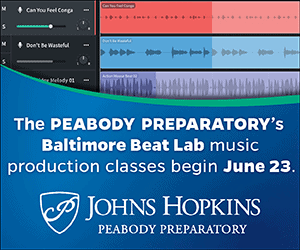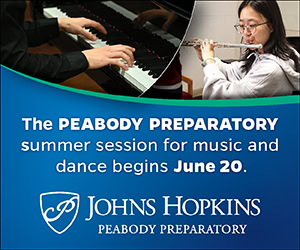/ News Posts / The Power of Pause
The Power of Pause
How Storytelling Can Promote Rejuvenation in a Classroom
By NAfME Member Lori Schwartz Reichl
This article was originally published in the December 2016 teacher edition of In Tune Magazine.
“The right word may be effective, but no word was ever as effective as a rightly timed pause.” — Mark Twain
In my collegiate wind ensemble rehearsals, my conductor would often pause to tell a story, share a joke, or illustrate an analogy. Although I was captivated by the details of each anecdote, I couldn’t comprehend why he would sacrifice precious rehearsal time to share details of his personal life with his students. At first, I thought he had unintentionally veered off track—and I was convinced that he wasn’t managing his class in the most professional manner.
During these occasional pauses, our conductor would speak of his friends or family, a memorable event, or how the music made him feel. He was often dramatic, humorous, or heartfelt, speaking with emotion, urgency, and care. His stories never lasted too long, but they were entertaining and left us wanting to hear more. Surprisingly, after each of these stories was told, the members of the ensemble would always perform better. There was more emotion and precision in our playing. We were energized. We were inspired.
It was not until I embarked on my own teaching career and began rehearsing ensembles of my own that I understood what I have now come to regard as “the power of pause.” My former teacher’s storytelling was not “going off on a tangent.” His pauses were an intentional distraction, not so much for him as for us, the musicians. He was frustrated with the level of our performance, and therefore provided a diversionary strategy to help us get out of whatever rut we were in and inspire us to perform at a much higher level. And he did this in a natural way, which we enjoyed and eagerly anticipated. At times, we even requested him to share another story! Contrary to my original assumptions, my former teacher’s management plan had a great deal of purpose and passion. The pauses were valuable to our learning process, and he was mindful of this scheme.
Using this memorable example as an influence, I have come to incorporate rehearsal pauses into my teaching, too. These pauses often occur out of a sense of desperation, when “musical” teaching alone is not sufficient. It took time for me to discover the full potential of this technique for my students. More importantly, it took time for me to recognize that the pauses cannot occur frequently. Had I not taught behaviors before content (see last month’s column), the comportment of the students within the classroom would never allow for such intricate storytelling on my part or such focused attention from my young audience.
“Story Time with Lori” is the phrase that my students have coined to describe what happens when I pause my teaching to tell a story, share a joke, or make an analogy. My students have come to enjoy these pauses so much that they often request them! On occasion my students may be rehearsing a section of the music that they are unable to master, remain focused on, or play with emotion. When I know a distraction is needed, I cue a percussionist with a wink. That student will mischievously smile and gently swipe the wind chimes. After this familiar celestial signal is heard, a loud cheer erupts from my students, for they know “Story Time with Lori” is about to begin. My students immediately relax and intently listen to their storyteller . . . I mean, their teacher.
Sometimes the stories I share with my students relate directly to the music being rehearsed. Other stories are simply meant to serve as a distraction. Occasionally, a story may have no relevance to the music at all. These stories can range from comical to emotional. Most of them are true, but at times a slight exaggeration is needed to get my point across. I include vibrant inflections in my voice, animated expressions in my face, and energetic movements with my body. Occasionally I use a prop, costume, or a volunteer. My students are captivated by my words. While I tell my story, their faces light up with enthusiasm. Laughter can ensue, gasps can be heard, or an occasional tear can be shed. When I finish, applause often erupts. I can’t lie—this applause feels good. But it feels even better when the rehearsal is resumed and my students’ music-making is remarkably improved. Energized and inspired, they play with greater emotion and precision. And they are prepared to learn more.
Energized and inspired, they play with greater emotion and precision. And they are prepared to learn more.
Continue to reflect on your classroom management techniques. Are there moments in your teaching when you’ve exhausted an idea, plan, or process? Have you ever experienced a class period when you sense that your students have all the appropriate tools but may not fully comprehend how or why to use them? Maybe your students need a break from the intensity of the lesson. Maybe you need a brief break from conveying instruction. Consider an intentional pause in your lesson or rehearsal to promote rejuvenation.
The popular phrase “less is more” is relevant in both teaching and music-making. If you teach with this type of efficiency on a daily basis, then an intentional pause will have much more power. When a pause is necessary, the following pointers may be helpful:
- Title your pause (for example, “Story Time with Lori”).
- Infrequency is crucial. If used too frequently, pauses will lose their effect.
- Pause for no more than five minutes.
- Be passionate when pausing.
- After pausing, return immediately to rehearsing the music.
A pause can be planned or unplanned. It can have a direct relationship to your musical teaching or no correlation at all. It can be emotional or comical. Regardless, make your pause unique and powerful. It’s not so much the words that are important as the timing, attitude, and effect. Captivate your students. Energize them. Inspire! Discover the power of pause.
About the author:
 NAfME Member Lori Schwartz Reichl is a music educator and writer. Gain inspiration from her at makingkeychanges.com.
NAfME Member Lori Schwartz Reichl is a music educator and writer. Gain inspiration from her at makingkeychanges.com.
Lori is the author of the series “Key Changes: Refreshing Your Music Program” published monthly in the teacher edition of In Tune Magazine where she provides resources to enhance the music classroom. As a writer for Teaching Music Magazine, she interviews master educators. Lori is an active adjudicator, clinician, and conductor. As an avid presenter at conferences, professional development sessions, and universities nationwide, she serves as a resource for building inspiring music programs, developing effective classroom management techniques and rehearsal routines, motivating diverse learners, and achieving unity in ensembles. Within Maryland, Lori serves as Music Education Intern Supervisor at Towson University and as Coordinator of Howard County Public School System’s Secondary Solo and Ensemble Festival. As Director of the Regional Repertory Wind Ensemble, she has collaborated with composers Brian Balmages, Tyler S. Grant, Samuel Hazo, Richard Saucedo, Robert Sheldon, and Frank Ticheli. Learn more about Lori here.
Interested in reprinting this article? Please review the reprint guidelines.
The National Association for Music Education (NAfME) provides a number of forums for the sharing of information and opinion, including blogs and postings on our website, articles and columns in our magazines and journals, and postings to our Amplify member portal. Unless specifically noted, the views expressed in these media do not necessarily represent the policy or views of the Association, its officers, or its employees.
Published Date
August 6, 2018
Category
- Classroom Management
Copyright
August 6, 2018. © National Association for Music Education (NAfME.org)






